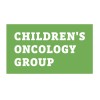Combination Chemotherapy Plus Peripheral Stem Cell Transplantation Followed by Surgery and/or Radiation Therapy in Treating Young Patients With Advanced Neuroblastoma
Neuroblastoma

About this trial
This is an interventional treatment trial for Neuroblastoma focused on measuring disseminated neuroblastoma
Eligibility Criteria
DISEASE CHARACTERISTICS: Newly diagnosed stage IV neuroblastoma by one of the following: Histologic verification Demonstration of tumor cell clumps in bone marrow with elevated urinary catecholamine metabolites Initial presentation with low-stage disease allowed if followed by progression to stage IV disease PATIENT CHARACTERISTICS: Age: 1 to 21 Performance status: Not specified Hematopoietic: (unless bone marrow involvement by tumor) Absolute neutrophil count greater than 1,000/mm3 Platelet count greater than 100,000/mm3 Hepatic: Bilirubin less than 3.0 mg/dL Renal: Creatinine less than 1.5 mg/dL Creatinine clearance or radionuclide GFR greater than 60 mL/min Cardiovascular: EKG normal Ejection fraction at least 55% by radionuclide MUGA OR Fractional shortening at least 28% by echocardiogram Other: No other significant organ dysfunction that precludes study treatment Body weight at least 10 kg Not pregnant or nursing Effective contraception required of fertile patients PRIOR CONCURRENT THERAPY: No prior systemic chemotherapy No prior radiotherapy except as emergency treatment
Sites / Locations
- Children's Hospital Los Angeles
- UCSF Cancer Center and Cancer Research Institute
- Indiana University Cancer Center
- University of Minnesota Cancer Center
- Children's Hospital Medical Center - Cincinnati
- Children's Hospital of Columbus
- Children's Hospital and Regional Medical Center - Seattle
Arms of the Study
Arm 1
Experimental
Treatment - Carboplatin Chemotherapy
See detailed description.
Outcomes
Primary Outcome Measures
Secondary Outcome Measures
Full Information
1. Study Identification
2. Study Status
3. Sponsor/Collaborators
4. Oversight
5. Study Description
6. Conditions and Keywords
7. Study Design
8. Arms, Groups, and Interventions
10. Eligibility
12. IPD Sharing Statement
Learn more about this trial
